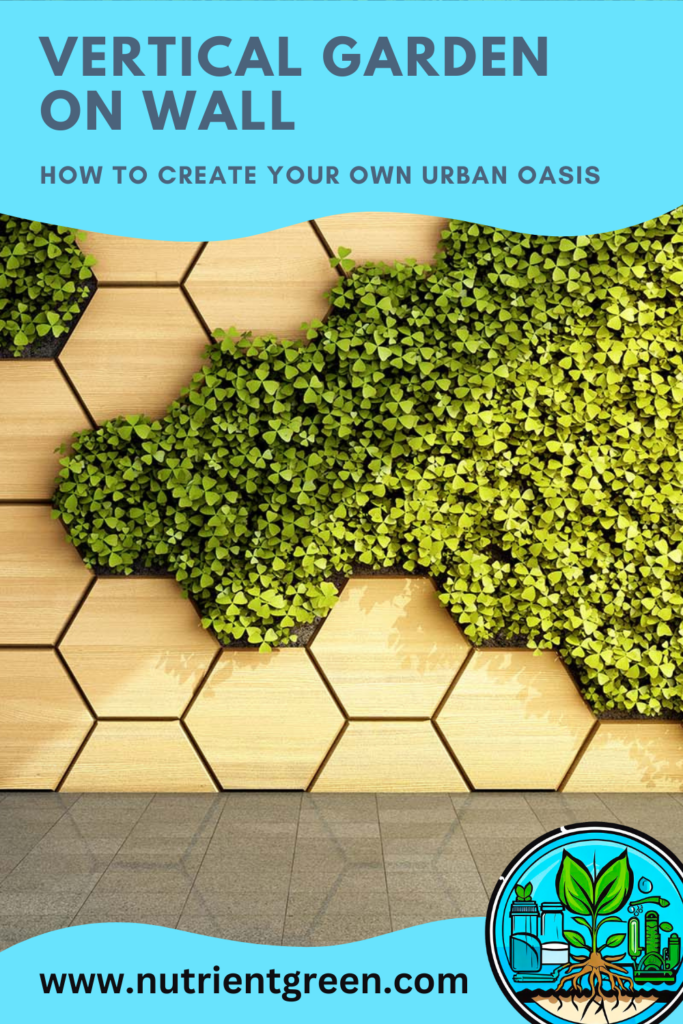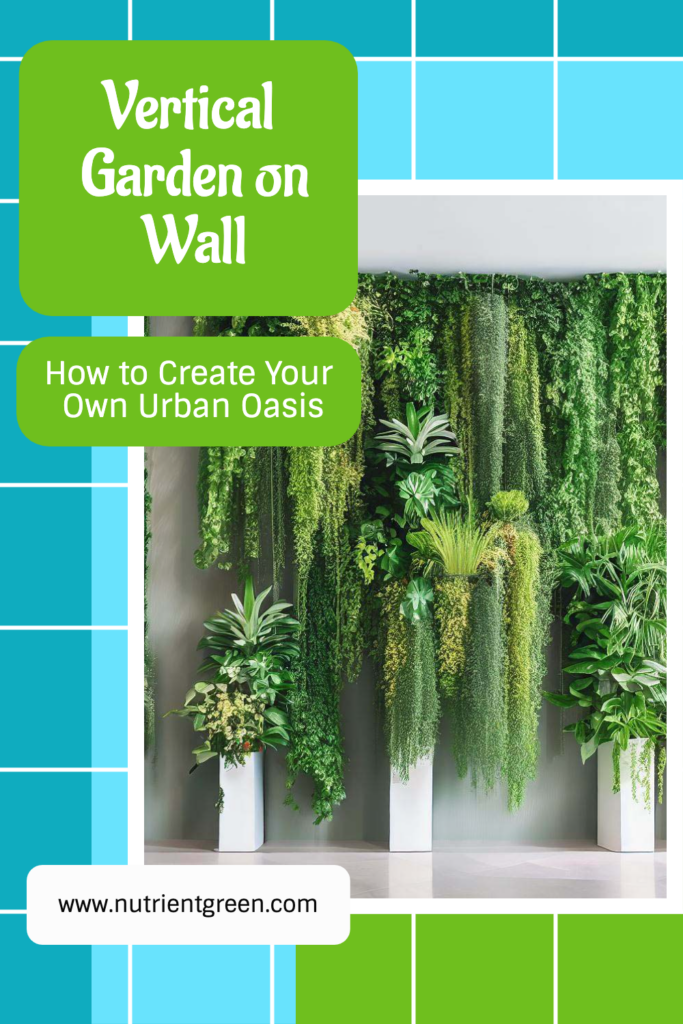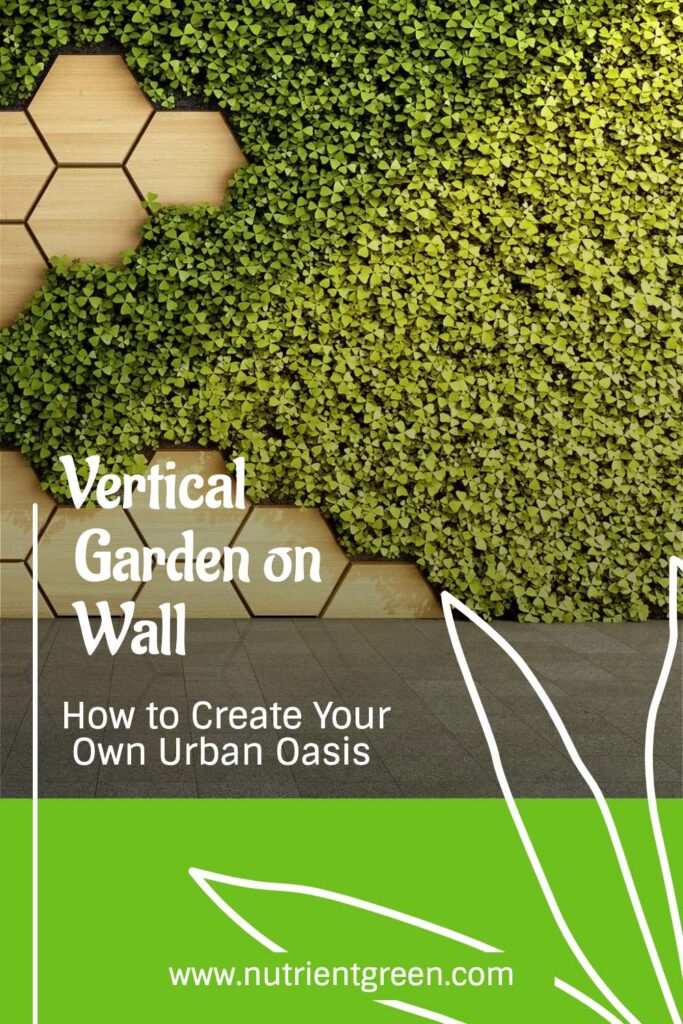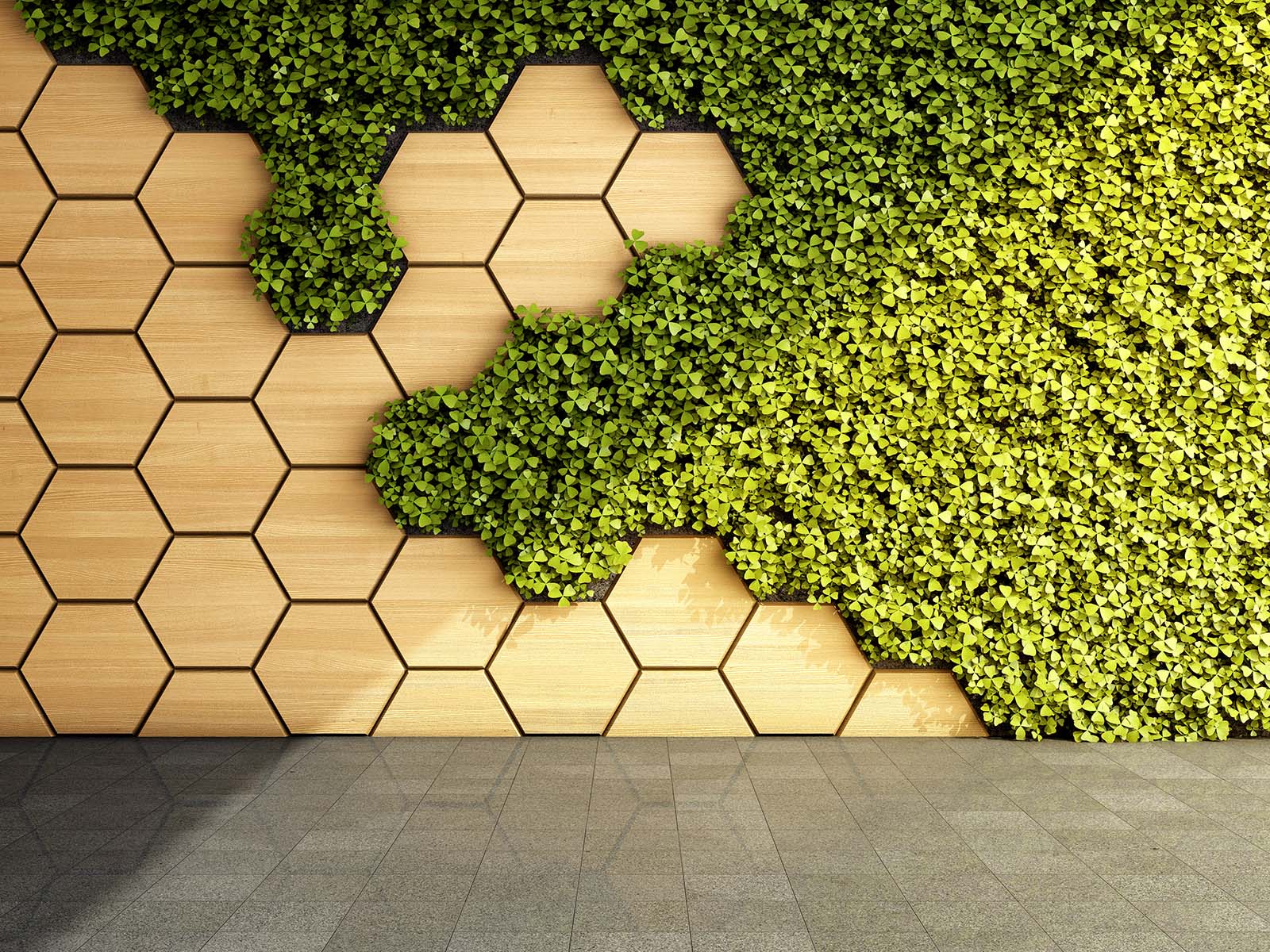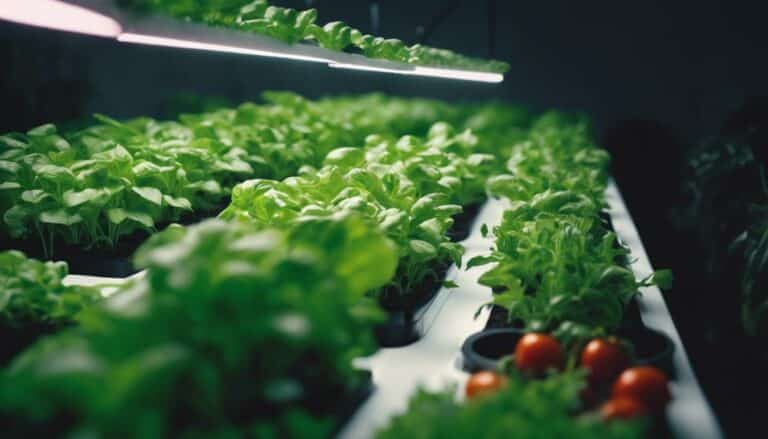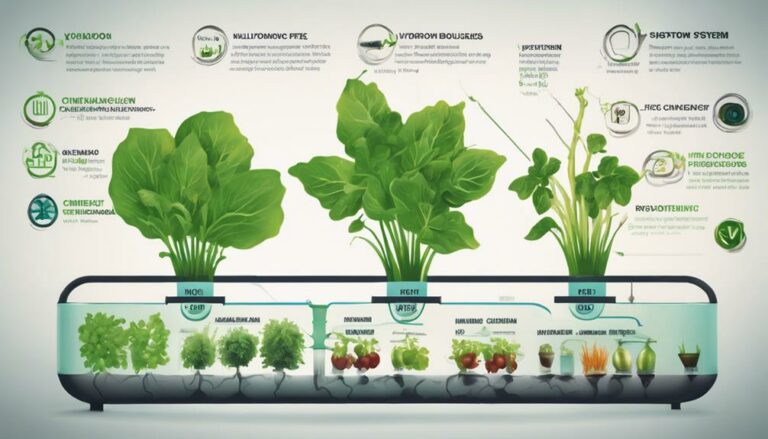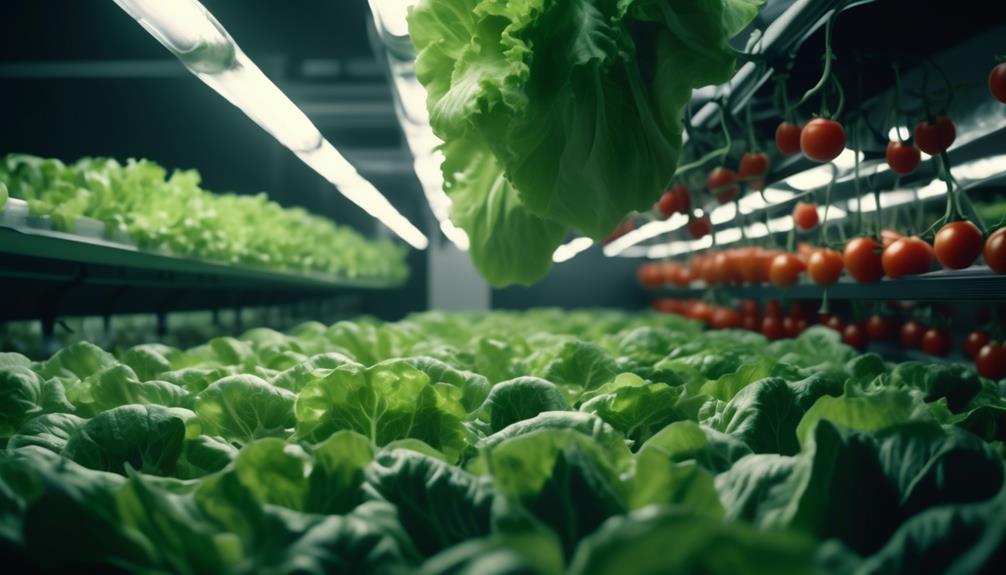Are you living in a small apartment or a bustling city? Craving more greenery and fresh air at home? Love gardening but lack space? If you answered yes, it’s time to explore the wonders of a vertical garden on your wall.
Table of Contents
Introduction
Vertical gardening involves cultivating plants on vertical surfaces like walls, fences, balconies, or windows. It’s a fantastic way to maximize limited space, infuse your home with beauty and vibrant hues, and immerse yourself in nature’s benefits.
Join me in this article as I guide you through creating your own wall-mounted vertical garden. Discover suitable plant options, explore various systems, and learn the secrets of maintenance. By the end, you’ll be equipped to transform your wall into a thriving urban oasis.
What is a vertical garden?
A vertical garden, also known as a living wall, green wall, or wall garden, allows you to cultivate plants on vertical surfaces like walls, fences, balconies, or windows. It offers flexibility for both indoor and outdoor settings, catering to your preferences and climate.
When it comes to vertical gardens, the options are abundant. You can choose from an array of materials and systems such as pots, containers, pockets, pouches, trellises, frames, hydroponics, aquaponics, and more. The plant selection is equally diverse, ranging from edible varieties to ornamental blooms and air-purifying species.
The size of your vertical garden is entirely up to you. It can span an entire wall or serve as a charming accent piece. Designing your vertical garden allows for personalization, reflecting your unique style and taste. Unleash your creativity by playing with patterns, shapes, colors, textures, and themes using your chosen plants.
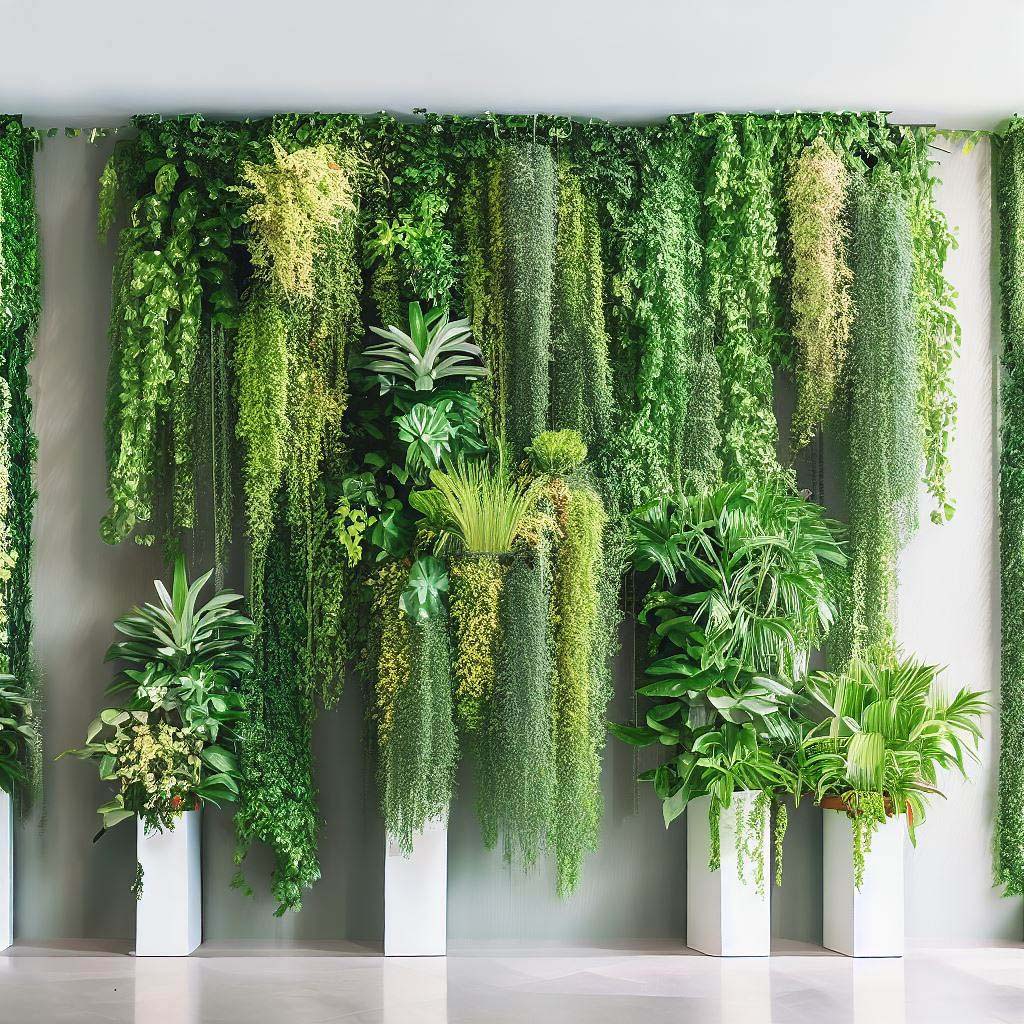
Why should you create a vertical garden on your wall?
There are many reasons why you should create a vertical garden on your wall. Here are some of them:
- It saves space. If you don’t have enough room for a traditional horizontal garden, a vertical garden is a perfect solution. You can grow more plants in less space by using your wall as a growing medium.
- It adds beauty and color. A vertical garden can transform your wall into a stunning focal point in your home. It can also brighten up your mood and make you feel happier.
- It improves air quality. Plants can filter out pollutants and toxins from the air and produce oxygen. A vertical garden can help you breathe better and reduce allergies and asthma.
- It reduces noise. Plants can absorb sound waves and create a quieter environment. A vertical garden can help you block out unwanted noises from traffic, neighbors, or appliances.
- It lowers energy costs. Plants can regulate temperature and humidity by providing shade and insulation. A vertical garden can help you keep your home cooler in summer and warmer in winter.
- It provides food and medicine. If you grow edible plants in your vertical garden, such as herbs, vegetables, fruits, or flowers, you can enjoy fresh and organic produce at your fingertips. You can also grow medicinal plants, such as mint, lavender, aloe vera, or chamomile, and use them for healing and wellness.
What are the benefits of a vertical garden?
A vertical garden can provide many benefits for you and your environment. Here are some of them:
- It enhances your well-being. Gardening is a relaxing and rewarding activity that can reduce stress, anxiety, and depression. It can also boost your creativity, productivity, and memory. A vertical garden can help you connect with nature and improve your mental and physical health.
- It attracts wildlife. Plants can provide food, shelter, and habitat for birds, butterflies, bees, and other beneficial insects. A vertical garden can help you create a mini-ecosystem in your home and support biodiversity.
- It reduces waste. Plants can recycle organic matter and nutrients from your kitchen scraps, coffee grounds, tea bags, eggshells, and more. A vertical garden can help you reduce your carbon footprint and landfill waste.
- It educates and inspires. A vertical garden can be a great way to teach your children or students about plants, ecology, sustainability, and art. It can also inspire you and others to appreciate and protect nature.

How to create a vertical garden on your wall
Now that you know what a vertical garden is and why you should create one on your wall, let’s get into the details of how to do it. Here are the main steps you need to follow:
Choose the right location
The first step is to choose the right location for your vertical garden. You need to consider the following factors:
- Light. Different plants have different light requirements. Some need full sun, some need partial shade, and some need low light. You need to choose plants that match the light conditions of your wall. You also need to avoid direct sunlight on your wall if it’s too hot or bright, as it can damage your plants or cause algae growth.
- Water. Different plants have different water requirements. Some need frequent watering, some need occasional watering, and some need minimal watering. You need to choose plants that match the water availability of your wall. You also need to avoid overwatering or underwatering your plants, as it can cause root rot or drought stress.
- Ventilation. Plants need air circulation to prevent fungal diseases and pests. You need to choose a location that has good air flow and ventilation for your vertical garden. You also need to avoid placing your vertical garden near sources of heat or cold air, such as radiators or air conditioners.
- Accessibility. You need to choose a location that is easy to access for maintenance purposes. You need to be able to reach your plants for watering, fertilizing, pruning, harvesting, and pest control. You also need to avoid placing your vertical garden too high or too low on your wall.
Choose the right plants
The second step is to choose the right plants for your vertical garden. You need to consider the following factors:
- Size. Different plants have different sizes and growth habits. Some are tall and bushy, some are short and compact, some are trailing and climbing, and some are spreading and creeping. You need to choose plants that fit the size and shape of your wall. You also need to avoid overcrowding or underplanting your plants, as it can affect their health and appearance.
- Color. Different plants have different colors and textures. Some have green leaves, some have variegated leaves, some have colorful flowers, some have edible fruits, and some have decorative seeds or pods. You need to choose plants that create a harmonious color scheme for your vertical garden. You also need to avoid clashing or dull colors, as it can affect the visual appeal of your vertical garden.
- Function. Different plants have different functions and purposes. Some are edible, some are ornamental, some are air-purifying, some are medicinal, and some are aromatic. You need to choose plants that suit your needs and preferences for your vertical garden. You also need to avoid toxic or invasive plants, as they can harm you or your environment.
Here are some examples of plants that you can grow in your vertical garden:
Edible plants
If you want to grow food in your vertical garden, you can choose from a variety of herbs, vegetables, fruits, and flowers that are suitable for vertical gardening.
| Herbs | Vegetables | Fruits | Flowers |
|---|---|---|---|
| Basil | Lettuce | Strawberry | Nasturtium |
| Mint | Spinach | Blueberry | Calendula |
| Parsley | Kale | Raspberry | Marigold |
| Oregano | Arugula | Blackberry | Viola |
| Thyme | Swiss chard | Cranberry | Pansy |
| Rosemary | Bok choy | Grape | Lavender |
| Sage | Cabbage | Kiwi | Rose |
| Chives | Broccoli | Melon | Hibiscus |
| Cilantro | Cauliflower | Watermelon | Chamomile |
| Dill | Brussels sprouts | Pineapple | Dandelion |
| Radish | Banana | ||
| Carrot | Fig | ||
| Beet | |||
| Turnip | |||
| Pea | |||
| Bean | |||
| Tomato | |||
| Pepper | |||
| Cucumber | |||
| Zucchini | |||
| Squash | |||
| Eggplant | |||
| Okra |
Please note that this table is not exhaustive and serves as a starting point. There are numerous other herbs, vegetables, fruits, and flowers that can be grown in a vertical garden.
Ornamental plants
If you want to grow flowers in your vertical garden, you can choose from a variety of annuals, perennials, bulbs, and succulents that are suitable for vertical gardening.
| Annuals | Perennials | Bulbs | Succulents |
|---|---|---|---|
| Petunia | Hosta | Tulip | Aloe vera |
| Geranium | Fern | Daffodil | Jade plant |
| Impatiens | Ivy | Hyacinth | Echeveria |
| Begonia | Lily of the valley | Crocus | Sempervivum |
| Marigold | Heuchera | Iris | Crassula |
| Zinnia | Sedum | Lily | Kalanchoe |
| Cosmos | Lamb’s ear | Gladiolus | Sedum |
| Sunflower | Salvia | Dahlia | Cactus |
| Snapdragon | Verbena | Amaryllis | |
| Lobelia | Aster |
Again, please note that this table provides only a selection of examples for each category. There are numerous other ornamental annuals, perennials, bulbs, and succulents available for vertical gardening.
Air-purifying plants
If you want to grow plants that can improve the air quality in your home, you can choose from a variety of plants that are known to filter out pollutants and toxins from the air and produce oxygen.
Some examples of air-purifying plants are
- spider plant
- snake plant
- peace lily
- pothos
- philodendron
- dracaena
- ficus
- palm
- fern
- orchid
Choose the right system
The third step is to choose the right system for your vertical garden. You need to consider the following factors:
- Cost. Different systems have different costs and budgets. Some are cheap and easy to make, some are expensive and complex to install. You need to choose a system that fits your budget and resources. You also need to consider the ongoing costs of maintenance and replacement.
- Space. Different systems have different space requirements and capacities. Some are compact and lightweight, some are bulky and heavy. You need to choose a system that fits the size and weight of your wall. You also need to consider the space available for storage and drainage.
- Style. Different systems have different styles and aesthetics. Some are simple and minimalist, some are elaborate and decorative. You need to choose a system that matches your style and taste. You also need to consider the style of your home and wall.
Here are some examples of systems that you can use for your vertical garden:
Pots and containers
Pots and containers serve as the simplest and widely used system for vertical gardening. You have the freedom to choose from a variety of options, including plastic pots, ceramic pots, metal cans, wooden boxes, baskets, or buckets, as long as they feature drainage holes at the bottom. Fill them with potting soil or compost, and plant your desired greens within. Hanging them on the wall can be achieved using hooks, nails, screws, brackets, or wires. Alternatively, you can stack them on shelves or racks affixed to the wall.
The advantages of pots and containers lie in their simplicity and affordability. They offer ease in creation and purchasing while providing the flexibility to rearrange your vertical garden as desired. However, it’s essential to consider that they occupy considerable space and add weight to your wall. Regular watering and fertilization are necessary as these containers tend to dry out quickly.
Pockets and pouches
Pockets and pouches present another straightforward and prevalent system for vertical gardening. Utilizing fabric or plastic materials that are breathable and water-resistant, such as felt pockets, canvas pouches, shoe organizers, or hanging planters, offers flexibility. Fill them with potting soil or compost, and introduce your plants into these pockets or pouches. Hanging them on the wall is achievable through hooks, nails, screws, brackets, or wires, while stacking them on wall-attached shelves or racks is an alternative option.
The benefits of pockets and pouches lie in their simplicity and affordability, just like pots and containers. They allow for easy creation and economical purchases, while also providing the convenience of rearranging your vertical garden whenever desired. It’s important to keep in mind that they do require sufficient wall space and contribute to its weight. Due to their quick drying nature, regular watering and fertilization are essential to maintain their vitality.
Trellises and frames
Trellises and frames offer yet another simple and widely adopted system for vertical gardening. The options are diverse, including wooden, metal, plastic, or bamboo materials known for their durability and strength. Lattice panels, wire mesh, chicken wire, or PVC pipes are popular choices. Attach them securely to your wall using hooks, nails, screws, brackets, or wires. Once in place, you have the flexibility to plant in pots or containers, hanging them on the trellises or frames. Alternatively, you can utilize pockets or pouches to plant directly on the trellises or frames.
Trellises and frames provide the advantages of ease of construction and affordability, similar to other vertical gardening systems. They offer the freedom to adjust and redesign your vertical garden according to your preferences. However, it’s important to consider the space they occupy and the added weight on your wall. Due to the quick drying nature, regular watering and fertilization are necessary to sustain the plants’ well-being.
Hydroponics and aquaponics
Hydroponics and aquaponics represent advanced and intricate systems for vertical gardening. These methods revolve around the concept of cultivating plants without soil, relying on water and nutrient solutions instead. Hydroponics employs a water-based solution that contains all the necessary plant nutrients, while aquaponics combines fish farming with plant cultivation, utilizing fish waste to provide nutrients for the plants, and the plants purify the water for the fish.
Implementing hydroponics and aquaponics requires specialized components, including a water reservoir, pump, timer, filter, tubing, and a suitable growing medium like rockwool, perlite, vermiculite, or clay pebbles. Planting is done within the growing medium, which can be placed on the wall using pots or containers. Alternatively, pockets or pouches can be employed for direct planting on the wall.
Hydroponics and aquaponics entail higher costs and complexity in terms of installation and maintenance. They also demand substantial space and impose weight on the wall. Nevertheless, they offer distinct advantages over other systems. These methods conserve water and fertilizers by recycling them within a closed-loop system. Moreover, they promote accelerated and healthier plant growth by providing optimal conditions for plant development.

How to maintain a vertical garden on your wall
The last step is to maintain your vertical garden on your wall. You need to consider the following factors:
Watering and fertilizing
Regular watering is essential to meet the specific needs of your plants and the chosen system in vertical gardening. Depending on the requirements, you can opt for various watering methods such as a watering can, hose, drip irrigation system, or misting system. Each method offers its own advantages, allowing you to efficiently provide water to your plants.
In addition to watering, occasional fertilization is necessary to ensure your plants receive the necessary nutrients for healthy growth. The frequency and type of fertilizer will depend on the individual needs of your plants and the selected system. You have the flexibility to choose between organic or synthetic fertilizers that are suitable for vertical gardening. This way, you can support the optimal development of your plants and promote their overall well-being.
Pruning and harvesting
Regular pruning is essential for maintaining the health and visual appeal of your plants in a vertical garden. By removing dead or overgrown parts, you promote healthier growth and ensure an attractive appearance. Depending on the size and type of plant, you can utilize scissors, shears, or knives to carry out the pruning process effectively.
If you’re growing edible plants in your vertical garden, regular harvesting is equally important. By harvesting your crops at the appropriate time, you can enjoy the fruits of your labor. Harvesting tools such as scissors, shears, or knives are commonly used to carefully gather the edible portions of the plants. Alternatively, some plants can be harvested simply by using your hands, ensuring a gentle approach that maintains the integrity of the produce.
Pest and disease control
Vigilant monitoring of your plants is crucial to identify any signs of pests or diseases that can harm their health and overall appearance in a vertical garden. By regularly inspecting your plants, you can promptly address any issues that arise.
When it comes to pest and disease management, you have the option to choose from organic or synthetic methods that are suitable for vertical gardening. Organic methods involve the use of natural substances and techniques, such as neem oil, insecticidal soaps, companion planting, or physical barriers, to prevent or control pests and diseases. On the other hand, synthetic methods involve the use of chemical pesticides or fungicides specifically formulated for garden use.
Selecting the appropriate method depends on your personal preferences, environmental considerations, and the specific pest or disease you are dealing with. By staying proactive and taking appropriate measures, you can ensure the health and vitality of your plants in your vertical garden.
Conclusion
Creating a vertical garden on a wall allows you to transform spaces and bring the beauty of nature into your everyday life. With careful planning, plant selection, and design, you can create a visually stunning and functional garden that enhances your living environment. Remember to consider sunlight availability, wall suitability, and maintenance accessibility when choosing your wall. Select plants suitable for vertical growth, incorporate various sizes and textures, and design a layout that pleases the eye. Follow proper installation and maintenance practices, troubleshoot common issues, and provide long-term care to ensure the success of your vertical garden. Embrace the possibilities of urban gardening and hydroponics, and let nature flourish on your walls!
By following these steps, you can transform your wall into an urban oasis that will make you happy and proud.
FAQs
How much does it cost to create a vertical garden on my wall?
The cost of creating a vertical garden on your wall depends on many factors, such as the size of your wall, the type of system you use, the type of plants you grow, the materials and tools you need, and the labor and maintenance costs. You can create a vertical garden on your wall for as low as $50 or as high as $5000, depending on your budget and preferences.
How long does it take to create a vertical garden on my wall?
The time it takes to create a vertical garden on your wall depends on many factors, such as the size of your wall, the type of system you use, the type of plants you grow, the materials and tools you need, and the level of difficulty and complexity of the project. You can create a vertical garden on your wall in as little as a few hours or as long as a few days, depending on your skills and experience.
How do I water my vertical garden on my wall?
The way you water your vertical garden on your wall depends on the type of system you use and the type of plants you grow. You can use a watering can, a hose, a drip irrigation system, or a misting system to water your plants. You need to water your plants regularly according to their needs and the type of system you use. You can check the soil or growing medium for moisture by touching it with your finger or using a moisture meter. You can also observe the signs of overwatering or underwatering in your plants, such as wilting, yellowing, drooping, or browning.
How do I fertilize my vertical garden on my wall?
The way you fertilize your vertical garden on your wall depends on the type of system you use and the type of plants you grow. You can use organic or synthetic fertilizers that are suitable for vertical gardening. You need to fertilize your plants occasionally according to their needs and the type of system you use. You can follow the instructions on the fertilizer package or consult an expert for guidance. You can also observe the signs of overfertilizing or underfertilizing in your plants, such as stunted growth, leaf burn, nutrient deficiency, or nutrient toxicity.
How do I prune and harvest my vertical garden on my wall?
The way you prune and harvest your vertical garden on your wall depends on the type of plants you grow and the purpose of your vertical garden. You can use scissors, shears, knives, or hands to prune and harvest your plants. You need to prune your plants regularly to keep them healthy and attractive. You can remove any dead, diseased, damaged, or unwanted parts of your plants. You can also shape and train your plants to fit your design and style. You need to harvest your plants regularly if you grow edible plants in your vertical garden. You can pick any ripe or ready parts of your plants that you want to eat or use. You can also store or preserve any excess parts of your plants for later use.
Can I create a vertical garden on wall indoors?
Absolutely! Vertical gardens can thrive indoors with proper planning and care. Choose plants that can tolerate lower light levels and consider using artificial lighting to supplement natural light if necessary.
Can I create a vertical garden on a fence or balcony railing?
Yes, a fence or balcony railing can be an excellent vertical garden support. Ensure the structure is strong enough to bear the weight of the garden, and consider using hanging baskets, pocket planters, or trellises to create your vertical oasis.
Remember, creating a vertical garden is an opportunity to express your creativity and connect with nature. Enjoy the journey and the beauty of your green wall as it grows and flourishes over time. Happy gardening!
